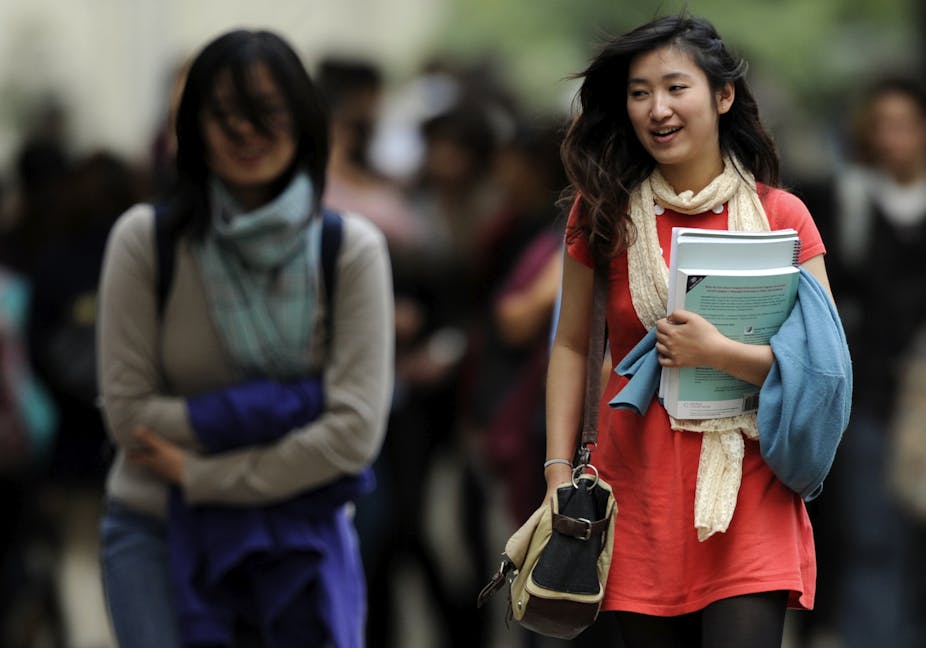A recent report on the satisfaction levels of international students in Australia, the United States and Britain has found that a student’s social life plays a big role in their happiness with their study experience. International students who made local friends were more satisfied with their international education. They were also more willing to recommend their university to others.
The report, released by the International Graduate Insight Group, surveyed 60,000 international students across 48 universities. It revealed that levels of satisfaction varied across national groups. Researchers found that students from China – the largest source of international students – are some of the least satisfied with their experience.
Most of the international students were generally happy with their overseas education experience, but those who were not said they would not recommend their institutions to others.
While the study does not suggest that unhappy international students will lead to the downfall of our lucrative international education industry, it does prompt us to ask why they are unhappy, and what can be done about it.
Making mates with Aussies
According to the Graduate Insight Group study, the unhappiest students are those who interact primarily with other students from their home country. In other words, not having local friends seems to be a cause for sadness.
Research into the well-being of international students suggests that integration with local students makes for happier and healthier individuals. International students who have local friends note that they experience less culture shock, feel less homesick and are generally more well-adjusted than those who have few or no local friends.
International students, particularly those from Asia, are often perceived as hanging out primarily with other international students. My ongoing research suggests that this perception is not far off the mark.
I am finding that the Asian international students I spoke to admit that they have very few or no local friends. They inform me that the only times they meet Australians is in their lectures and tutorials. This is not surprising since they are here to study and their primary contact with Australians is in their courses. However, the international students note that local students don’t want to mix with them after class, least of all talk to them.
Interestingly, the international students I interviewed also found it difficult to identify with Asian-Australians, making it hard for them to feel “at home” in Australia. To complicate matters, the international students consider Australians to be white/Caucasian rather than ethnically diverse.
By and large, my interviewees said that while they wanted to interact with Australians, they believed that locals felt otherwise. They blamed themselves for their lack of Australian friends, pointing to their lack of English skills and status as foreigners with little in common with Australians as reasons for not having Aussie mates.
International students thus have little recourse but to hang out with fellow international students.
What can we do about it?
International education brought in $16.3 billion in 2010-11, and the students contribute to the Australian economy in secondary industries such as real estate and tourism. This is not an industry we want to lose, both for economic reasons and because international students provide social benefits, giving Australians valuable opportunities to meet, mix and mingle with nationalities, cultures and ethnicities different or even similar to their own.
It’s clear that we need to improve the social experience of international students if we want to keep them coming to Australian universities. But how do we influence their social interactions?
University-based social programs can play an important role. Universities can’t force locals and international students to mix and mingle, but they can help bring them together, especially during orientation weeks.
Universities often have excellent orientation programs for new international students. However, these specialised programs take place before the institution-wide orientation day, preventing the opportunity to socialise with local students and increasing the likelihood that international students will only make friends with other international students. By the time the new local students hit campus, international students will already have established the friends they will be hanging out with for the year.
Universities need to create inclusive orientation programs that foster interaction between local and international students. One way to do this would be to actively include interstate and country students in the international student orientation program. International students would thus meet Australians who are in some ways just as alien as they are. This would also offer Australian students new to the state or the area a guided introduction while making some new international friends.
To increase international student happiness, and thereby protect our billion-dollar education industry and its associated social benefits, we need to make sure that international students are integrated into Australian society. It is not enough simply to provide them with an Australian education. We need to provide them with opportunities to make Australian mates and to encourage them to participate fully in the social experience of living and studying in Australia.

